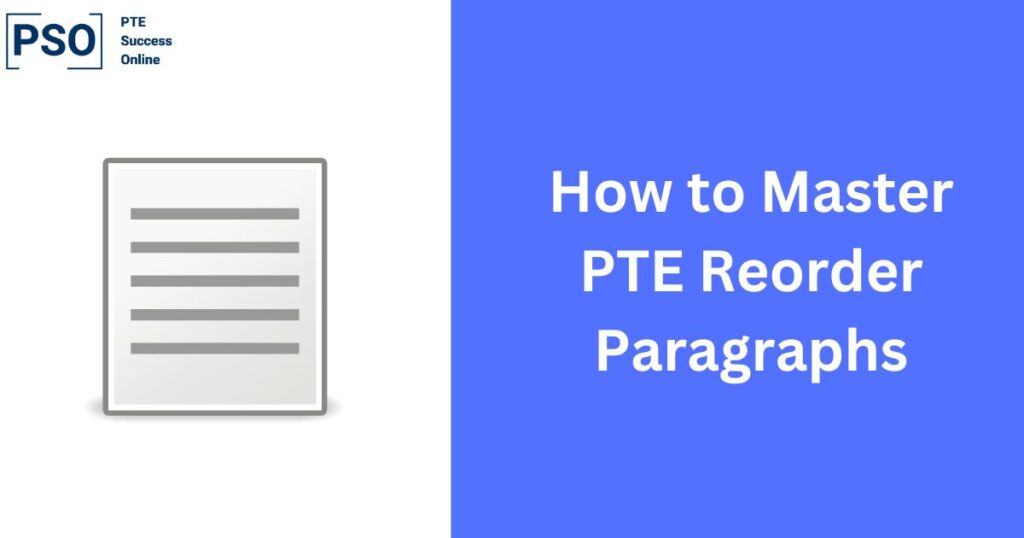What Are Reorder Paragraphs?
Reorder paragraphs are a type of question in the PTE Academic test. You get 4 to 5 sentences that are out of order, and your job is to put them back in the right sequence. It sounds simple, but it can be challenging when you’re under pressure.
Why Are They Important?
These questions test your ability to understand how ideas connect in a text. They check if you can spot the main idea, supporting details, and how sentences link together. These skills are key for academic reading and writing.
How to Tackle Reorder Paragraphs
- Find the First Sentence
The first step is to spot the sentence that starts the paragraph. Look for these clues:
- It often introduces a new idea or topic
- It might be more general than the other sentences
- It doesn’t refer back to information in the other sentences
- Spot the Last Sentence
Next, try to find the closing sentence. It usually:
- Wraps up the main idea
- Might conclude or make a final point
- Doesn’t lead to new information
- Connect the Middle Sentences
Once you have the start and end, focus on the sentences in between. Look for:
- Words that link ideas (like “however,” “therefore,” or “next”)
- Pronouns that refer to something mentioned earlier
- A logical flow of ideas from one sentence to the next
- Read it Through
After you’ve put the sentences in order, read the whole paragraph. Does it make sense? If something feels off, go back and check your work.
Practice Techniques
Regular Practice
The more you practice, the better you’ll get. Set aside time each day to work on reordering paragraph questions. You can find practice tests online or in PTE prep books.
Timed Practice
As you get better, start timing yourself. In the real test, you’ll have about 2-3 minutes per question. Try to solve them within this time limit.
Read Widely
Reading different types of texts can help you understand how paragraphs are structured. Try news articles, academic papers, and even blog posts. Pay attention to how the ideas flow from one sentence to the next.
Common Mistakes to Avoid
Rushing Through
Don’t rush to finish quickly. Take time to understand each sentence and how they fit together.
Ignoring Transition Words
Words like “however,” “therefore,” and “in contrast” are big clues about how sentences connect. Don’t overlook them!
Not Checking Your Answer
Always read through your final order to make sure it makes sense. A quick check can catch simple mistakes.
Getting Stuck
If you’re stuck between two options, make your best guess and move on. You can always come back if you have time at the end.
Advanced Tips
Look for Pronoun References
If a sentence uses “it,” “they,” or “this,” it usually comes after the sentence that introduces what these pronouns refer to.
Spot Cause and Effect
Sometimes, one sentence will describe a cause, and another will describe its effect. The cause usually comes first.
Notice Time Order
If the sentences describe events, they often go in chronological order. Look for time-related words like “first,” “then,” or “finally.”
On Test Day
Stay Calm
Take a deep breath before you start. Being calm helps you think clearly.
Manage Your Time
Don’t spend too long on one question. If you’re stuck, make your best guess and move on.
Use the Highlighting Tool
Most PTE tests let you highlight text on the screen. Use this to mark keywords or phrases that help you connect the sentences.
Final Thoughts
Mastering reorder paragraphs takes practice, but it’s a skill you can improve. Keep at it, and you’ll see your scores go up. Remember, every paragraph tells a story and your job is to put that story in the right order.
Good luck with your PTE prep! You’ve got this!

